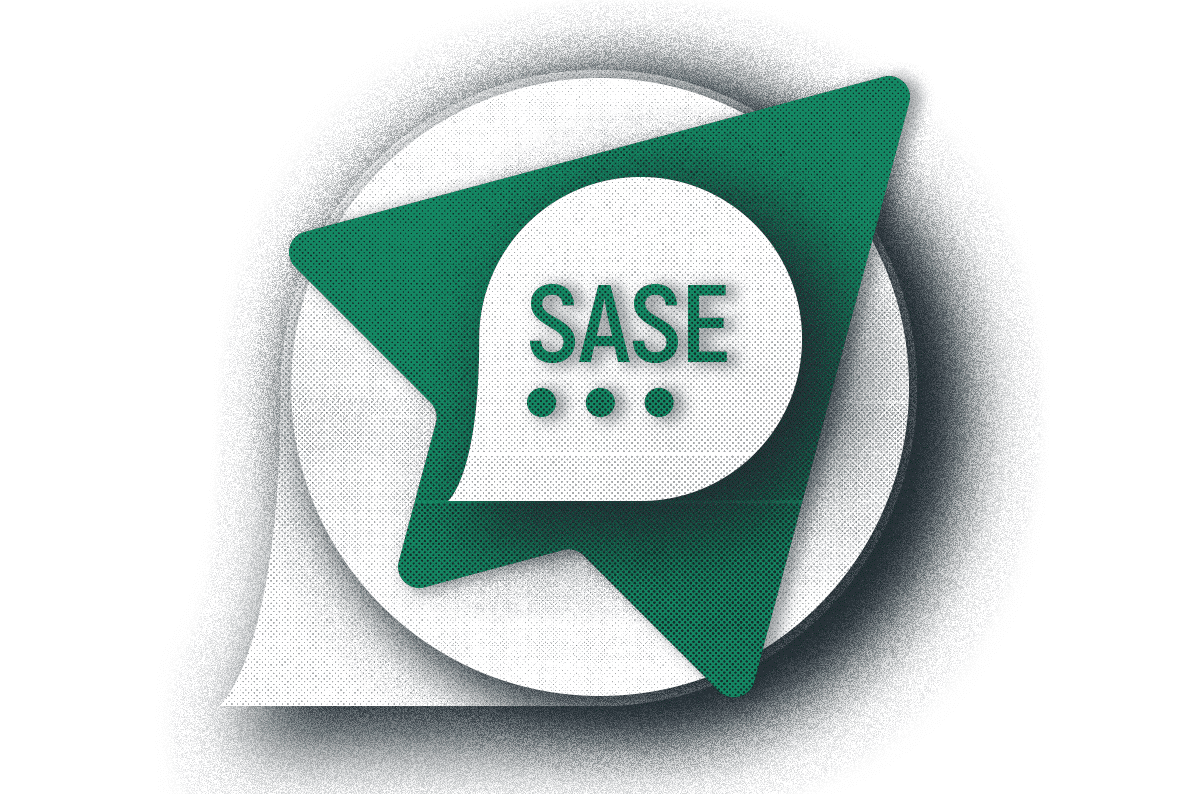Navigating Your First Steps with a Potential SASE Vendor

|
Listen to post:
Getting your Trinity Audio player ready...
|
When deciding to digitally transform your network to SASE, the large number of vendors out there might be confusing. What’s the best approach to take when comparing the different service providers? This blog post will provide you a methodical way to manage the conversations with any potential vendor, so you can ensure their solution can answer your needs.
To get the full SASE RFP template to help you navigate the vendor vetting process, click here. But first, let’s understand what SASE is.
What is SASE?
SASE (Secure Access Service Edge) is an innovative network and security architecture that is being increasingly adopted by global organizations. As a unified, global and cloud-based network that supports all edges, SASE improves network performance, reduces the attack surface and minimizes IT overhead.
What is SASE?
SASE (Secure Access Service Edge) is an innovative network and security architecture that is being increasingly adopted by global organizations. As a unified, global and cloud-based network that supports all edges, SASE improves network performance, reduces the attack surface and minimizes IT overhead.
What to Discuss with Potential SASE Vendors
We recommend discussing four main categories with your vendor as part of your RFI process:
- Your business and IT
- The vendor’s architecture
- The vendor’s capabilities
- The vendor’s service and support
Let’s dive into each one and see which aspects should be covered.
1. Your Business and IT
The purpose of this first discussion area is to help vendors to understand your business goals and your existing architecture. This will enable them to customize their solution to your needs and explain the value it can provide you.
Discussion points should include:
- Your business – provide an overview of your business, as well as the SASE project’s business goals in your eyes.
- IT architecture – describe your topology and stack, including your network architecture, technologies, topologies, geographies and security capabilities. Include any existing IT projects you are running or plan to incorporate in the future.
- Use cases – explain your current and planned use cases. Include geographies, mobile users, branches, cloud migration plans, and more.
Pro tip: provide the vendor with information about your future business goals that are seemingly unrelated to the project. You might be surprised at how SASE can help you achieve them.
2. SASE Architecture
The following section of the SASE RFI template will enable you to validate that the vendor’s SASE architecture meets business network needs. For example, SD-WAN, global reach, where elements are placed, and more.
Discussion points include:
- Architecture components – understand how the vendor provides SD-WAN, secure branch access, cloud optimization, global connectivity and mobile access.
- Architecture capabilities – ensure the architecture can support and provide high availability, stability, scalability, high performance, and simplified management.
- Architecture diagram – ask to see a diagram of the vendor’s architecture.
Pro tip: Ask the vendor to explain how the different components and capabilities contribute to the success of the project and your business goals.
3. SASE Capabilities
This third section in the SASE RFP template includes all the capabilities that will improve your network and security capabilities. You can pick and choose which capabilities you need now, but make sure your SASE vendor can expand to any additional needs you will need in the future.
Capabilities to discuss:
- SD-WAN – discuss link management capabilities, traffic routing and QoS, managing voice and latency-sensitive traffic, supported throughputs and edge devices, monitoring and reporting capabilities, how site provisioning works, and roll out strategies.
- Security – understand how traffic is encrypted, which threat prevention and threat detection capabilities are available, how branch and cloud security are implemented, how mobile users are secured, which identity and users awareness systems are incorporated, how policies are managed and enforced and which analytics and reporting capabilities are provided.
- Cloud – Which components are provided, which integrations are included and how traffic is optimized.
- Mobile – How mobile users are connected to the network while optimizing and securing traffic, and if ZTNA is provided.
- Global Connectivity – How traffic is optimized and latency is reduced from site to site and across the internet.
Pro tip: Ask the vendor to weigh in on which capabilities can answer your business goals.
4. SASE Support and Services
This fourth and final section of the SASE RFP template is about the relationship between you and the vendor after implementing SASE. It includes the co-management and maintenance of the project, what happens if things go wrong and how you can make changes after roll out.
Discussion points include:
- Support and professional services – When and how support is provided, what the SLAs are and which professional services are available.
- Managed services – which services are provided, what the different packages are, co-management capabilities, what is available through self-service and outsourcing options.
Pro tip: Ask to speak with existing customers who’ve used support services to find out how the vendor deals with issues.
Next Steps for Finding a SASE Vendor
SASE provides IT managers and network and security teams with a converged, simplified solution that replaces all existing point solutions. However, it’s important to choose the right vendor. A good SASE vendor will answer all of an organization’s existing and future needs.
Take your time to discuss all the points from above with the vendor, until you’re confident that your employees’ needs will be answered and the business can continue to grow without network and security frictions.
The discussion points in this blog post are based on a more comprehensive RFP template prepared by Cato Networks. You can get the full template free of charge here.














